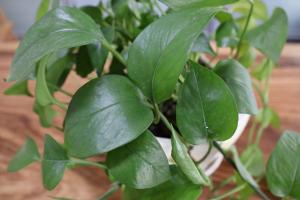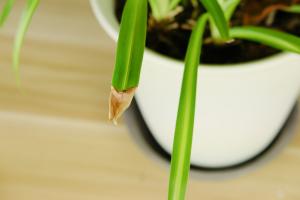Why Are My Tomato Plants Turning Yellow on Top?
Tomatoes are the ultimate garden crop, prized for their juicy texture and flavor. But when yellow leaves appear at the top of your plants, you might feel a sense of frustration and disappointment. Why is this happening, and what can you do about it? In this article, we'll explore some possible causes of yellowing tomato plants and how to address them.
1. Overwatering
One of the most common reasons for yellowing tomato plants is overwatering. When you give your plants too much water, the soil can become waterlogged, leading to root damage and reduced oxygen flow. This can cause the leaves at the top of the plant to turn yellow and eventually die off. To address this problem, be sure to water your tomato plants only when the top inch or so of soil is dry to the touch. This will ensure that the roots have plenty of oxygen and that the soil is not saturated.
2. Nutrient Deficiencies
Tomatoes require a balanced blend of nutrients to thrive, including nitrogen, phosphorus, and potassium. If your plants are not getting the right nutrients, they may start to show signs of yellowing. Nitrogen is particularly important for strong, healthy leaves, so a deficiency can cause yellowing at the top of the plant. To address this issue, you can add a nitrogen-rich fertilizer to your soil, such as a fish emulsion or blood meal. Be sure to follow the instructions carefully and avoid over-fertilizing, which can also cause problems.
3. Disease
Yellowing tomato plants can also be a sign of disease, such as bacterial spot or early blight. These diseases can infect the plant's leaves and cause them to turn yellow and eventually wither. To prevent disease, be sure to plant your tomatoes in well-drained soil with good air circulation. You can also use fungicides and other treatments to prevent the spread of disease. If your plants are already infected, you may need to remove the affected leaves and apply an appropriate treatment to save the rest of the plant.
4. Pest Infestations
Finally, yellowing tomato plants can be a sign of pest infestations, such as aphids or spider mites. These insects can feed on the leaves of your plant, causing them to turn yellow and become weakened. To address this issue, you can use insecticidal sprays or other treatments to deter or eliminate the pests. Be sure to follow the instructions carefully and apply treatments at the right time to avoid damage to your plants.
Conclusion
Yellowing tomato plants are a common and frustrating problem for gardeners, but fortunately, there are many ways to address the issue. By addressing the root cause of the problem, whether it's overwatering, nutrient deficiencies, disease, or pests, you can keep your tomato plants healthy and vibrant. With proper care and attention, you can enjoy a bountiful tomato harvest that will bring a pop of color and flavor to your garden and kitchen.

 how many times do yo...
how many times do yo... how many planted tre...
how many planted tre... how many pine trees ...
how many pine trees ... how many pecan trees...
how many pecan trees... how many plants comp...
how many plants comp... how many plants can ...
how many plants can ... how many plants and ...
how many plants and ... how many pepper plan...
how many pepper plan...
































